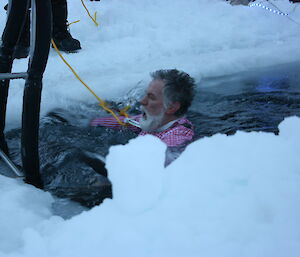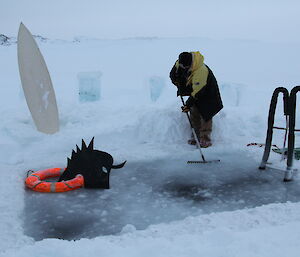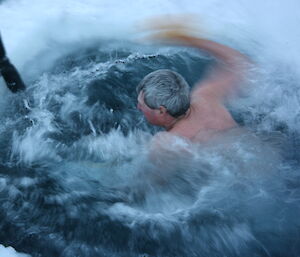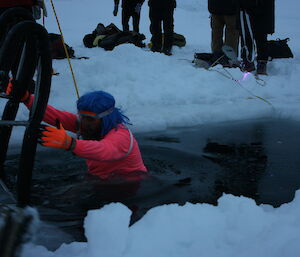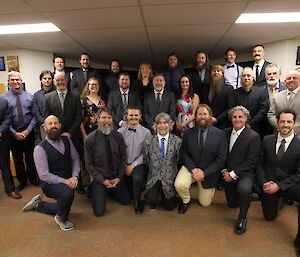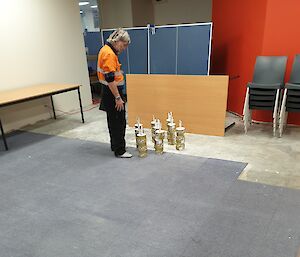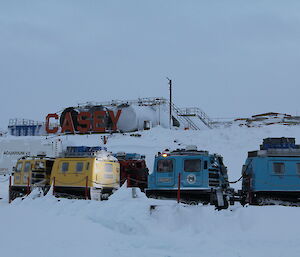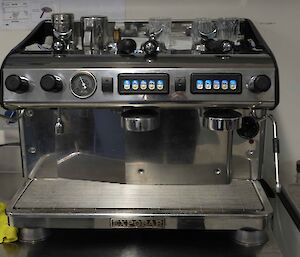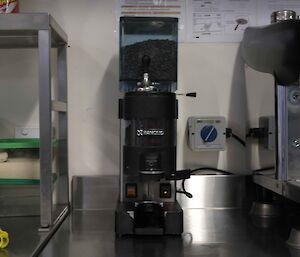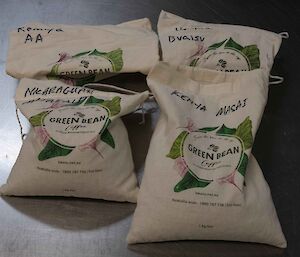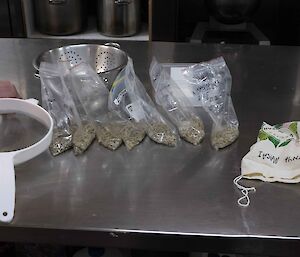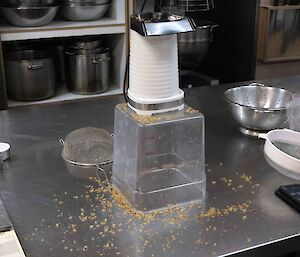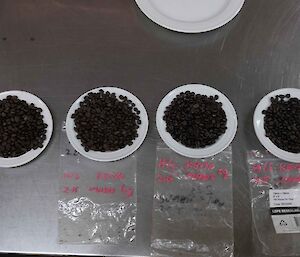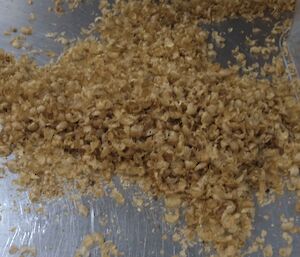In a dedicated alcove in the Casey mess, a hallowed place reserved for a solemn ritual, the revered Expobar Megacrem 2 buttressed upon a pedestal in repose like an Aztec god in empyrean contemplation of the firmament scarcely created.
And like an Aztec god administering divine decree, the Expobar Megacrem 2 demands constant oblation: a sacrifice of the finest coffee beans, to be reverentially pulverised by the celestial adjutant, the Rancilio MD 80 AT Coffee Grinder, in demonstrations of appalling annihilation for all, however great and mighty yea may be, to look upon and despair!
Accordingly, we here at Casey are capably-equipped with coffee-making apparatus of the highest order: the Expobar Megacrem 2 is a compact automatic espresso coffee machine with 2 groups, four programmable doses per group and direct pre-infusion chamber, electronic switchboard to control the coffee dosages volumetrically, with automatic water filling and 99.9% pure copper boiler of 6 litre capacity with thermosyphon and 450ml heat exchanger, steam pressure gauge, and 200 litre per hour pump capacity – my word! One steam tap (stainless steel) and one hot water tap, it is a traditional heat exchanger machine, with built-in motor and pump, a programmable touch pad to control the dose of the coffee at the touch of a button, making it the machine of choice for many baristas - heavens above!
We are also amply provided with coffee. I'm told that it used to be worse.
Coffee. Those rich and gleaming precious beans that launched a hundred thousand ships to stolidly part the waves with their grim bows plying intricate traceries across the oceans, from Africa to the Caribbean, from Colombia to Sumatra! Coffee! The entire world has succumbed to it, all of human ingenuity devoted to extracting pleasure, refreshment, and invigoration from Mother Earth’s very breast!
Some of us, it must be said, are rather more discerning, more exacting in our expectations of the coffee that passes our lips. We who are in this way fastidious have struck out and procured our own supplies of green coffee beans, with the intention of roasting them according to our own idiosyncratic peculiarities. These green coffee beans were bought on-line, then delivered to Kingston from whence they were despatched to us here at Casey by means of the Royal Australian Air Force Boeing C-17A Globemaster III Strategic Airlifter, in a stupendously parsimonious demonstration of the conscientious employment of resources!
The green coffee beans are separated into 70 gram portions - being a manageable quantity for the size of roaster used (more about this coming right up!), and sufficient for about three espresso coffees.
What’s that you ask? “Is that a Cuisinart® EasyPop™ Popcorn Maker domestic kitchen bench top popcorn popper?” Your visual acuity is prodigious, I applaud you!
The popcorn popper is, coincidentally and fortuitously, an almost ideal device for roasting coffee beans. It features a metal chamber into which the green coffee beans are placed. The popcorn popper generates hot air that is blasted into the circular metal chamber, along the sidewall. Being circular, the hot air surge spins the beans in the chamber while they’re roasted, ensuring a uniform roast to the beans. Astounding!
Coffee chaff is the dried skin on a coffee bean, the husk, which sloughs off during the roasting process. This chaff is a bit of a nuisance to roasters in the sense that it is a waste product, and being very light in weight, it spreads far and wide. Accordingly, a heavy punitive impost is levied on rogue coffee roasters (to wit, the humans that practise the art, not the turbulent devices) who should be so delinquent as to not collect and thoughtfully dispose of all of this chaff.
The roasted coffee that results varies in hue and complexion as much as it does in flavour and aroma, and these factors are intrinsically controlled by the duration of the roast. As little as 5 seconds is all that separates triumph from catastrophe. The coffees below, from left to right, were given roasts of 2 minutes, to 2 minutes 15 seconds, each differing by the momentously important 5 second increment of time.
Finally, the roasted coffee is poured from one large diameter sieve to another, again and again, in order to accelerate the air cooling of the beans. Then, when sufficiently cool, the beans are returned to their re-sealable zip-lock plastic storage bags, the bags are put to one side unsealed to allow the beans to “settle” for two or three days, after which they are ready – the coffee beans, purified and atoned by immolation, are consecrated for the most solemn ritual: the preparation of the coffee beverage!
- Sam Peppe, BoM Observer



